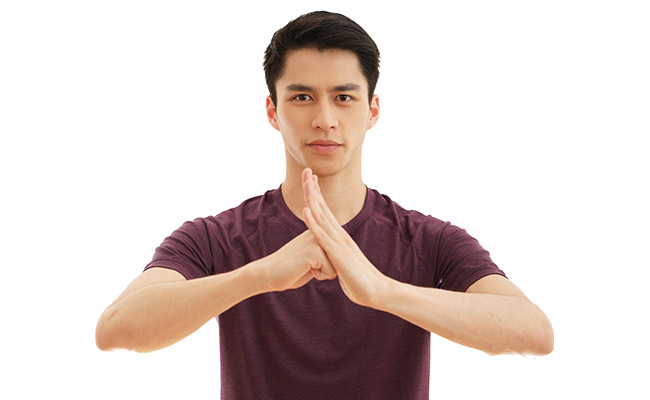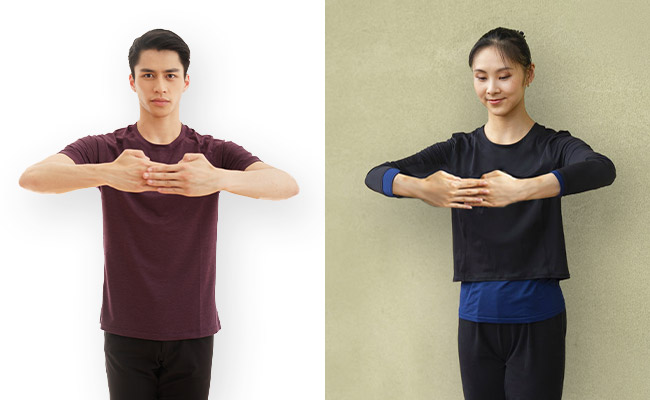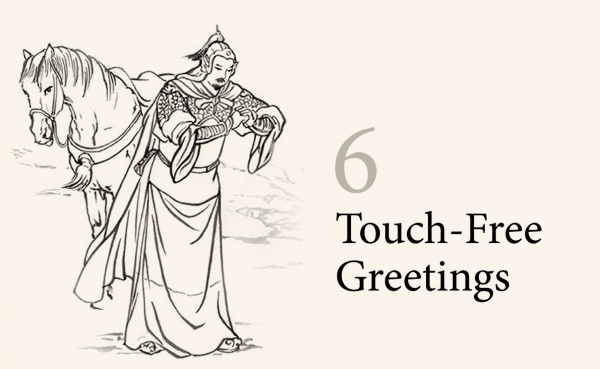You see an old-friend or you meet someone new. You both extend your hands for a shake and then awkwardly recoil… oh, yeah, social distancing.
The good ol’ handshake may have been the norm pre-CCP virus, but nowadays not everyone wants to get that up-close and personal. So we need some alternatives.
Luckily, we can look to ancient China for some ideas of how people used to greet each other back in the day. Handshakes were never a thing of the East. In fact, the Chinese had developed not one but several different ways to greet each another, all without touching.
So, let’s dive in to discover six touch-free greetings.
#1 Clasped Fist - 拱手禮

This gesture, which involves gently clasping one hand over a closed fist, is still popular in parts of Asia today. In Taiwan, especially, this traditional gesture is by no means outdated.
You can use it to express thanks, congratulate someone, apologize, or beseech someone to do you a favor.
With this gesture, men cup the fingers of their left hand over their right fist. Women cup their right hands over a left fist. Those in the know may stifle a giggle if you get this part wrong.
#2 Bow - 鞠躬禮

Bowing is a formal gesture, one that used to be popular in royal courts in the West. Today, it is still a common practice in many Asian countries.
Bowing etiquette varies slightly from country to country. In South Korea and Japan, where bowing is more common, it is discourteous not to return a bow. Social status is highly emphasized, and so bowing to superiors (such as managers, teachers, and elders) is definitely expected.
To perform an acceptable bow, you’ll need only to remember these points:
- Keep your back, neck, and head straight while bending at the waist.
- Keep your knees straight.
- Bow slowly to show due respect, but once you reach the bottom of the bow you can slowly come back up; no need to linger at the bottom.
- And generally keep in mind that the lower you bow the more sincerity and respect you express. But most of the time, a slight bow is plenty.
Done regularly, its also a great lower-back workout.
#3 Kung Fu Salute 抱拳禮

The kung fu salute is used in the martial arts world. To the untrained eye it can look like the clasped fist gesture above (#1). But in this greeting, the right fist is pressed firmly against an open left hand with fingers extended. You can even make a sound of fist against palm as you bring the hands together.
There are several explanations for where this gesture comes from. One of them is that it represents the ideal of the warrior-scholar. The fist represents the hardened warrior, and the open hand the scholar who is always receptive to learning.
#4 Chinese Curtsy 萬福

Back in antiquity, women not named Mulan wouldn’t usually perform the kung fu salute. They did, however, have a distinct form of greeting we’ll call the Chinese curtsy.
In this gesture, you curl your left hand and clasp it with the right. You then place both hands above the left hip and do a small curtsy, bowing slightly with knees bent.
#5 Zhou-style Greeting 作揖

This is an ancient form of greeting formalized during the Western Zhou Dynasty, some three thousand years ago.
There are actually nine different ways to do this one, depending on the situation.
Here, though, are the basics:
Stand with hands in front of the chest, palms facing inwards, forearms parallel to the ground.
- Men: left hand on the outside. Women: right hand on the outside.
- Fingers are relaxed.
#6 Heshi 合十

Heshi is a greeting often used by Buddhists. It is typical for Buddhist monks to greet other monks, abbots, or laypeople with a heshi. It is also used between people who practice any discipline of the Buddha school when greeting each other, as well as when praying, showing respect to a spiritual teacher, or facing the image of a divine being.
This move may also be familiar to you from yoga or other South Asian traditions. It is done by gently placing the heels of the palms together in front of the chest. The fingers are pressed gently together, leaving a hollow space between the hands. The forearms are relaxed, forming an almost straight line with the elbows out.
* * *
So, there you have it. Six ways to greet without touching, while keeping a happy distance. Try one the next time you meet someone and tell us how it goes. You never know, maybe one of these will catch on and make a comeback!




